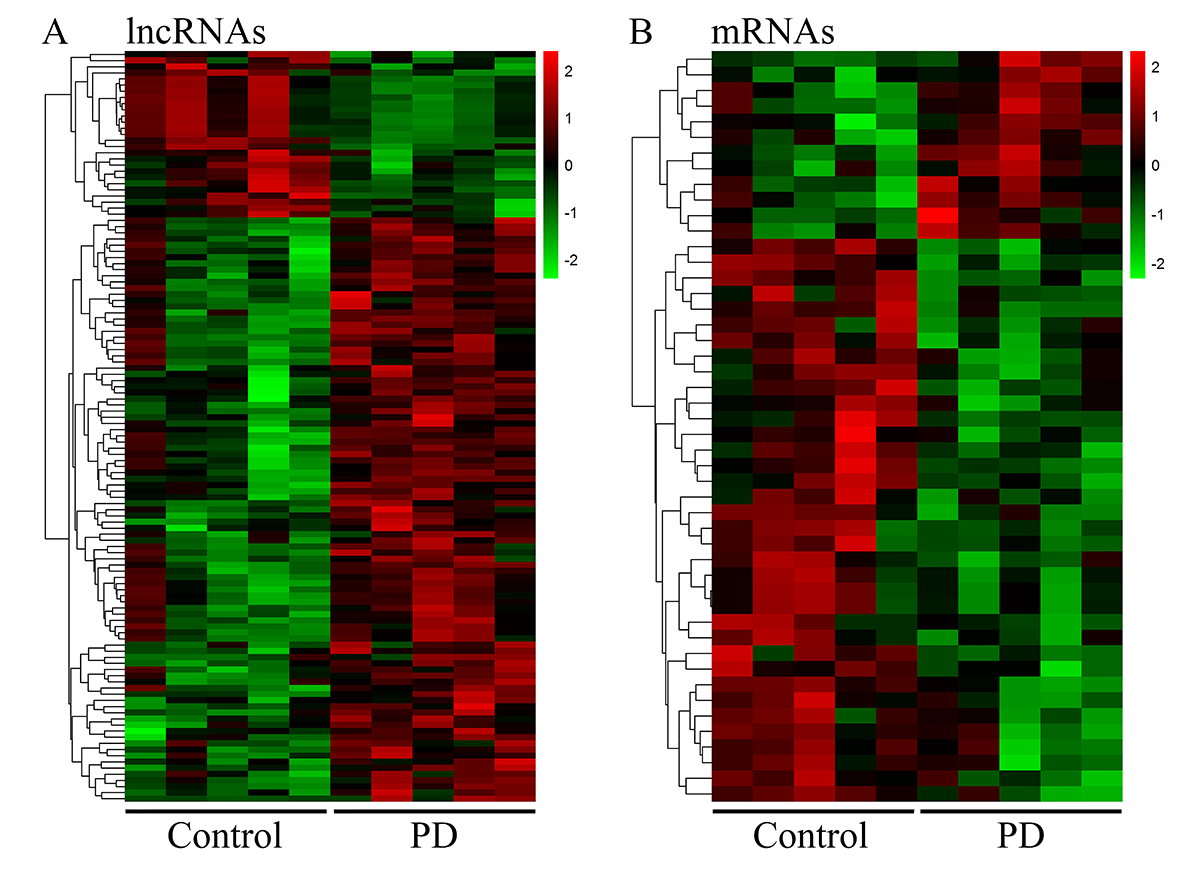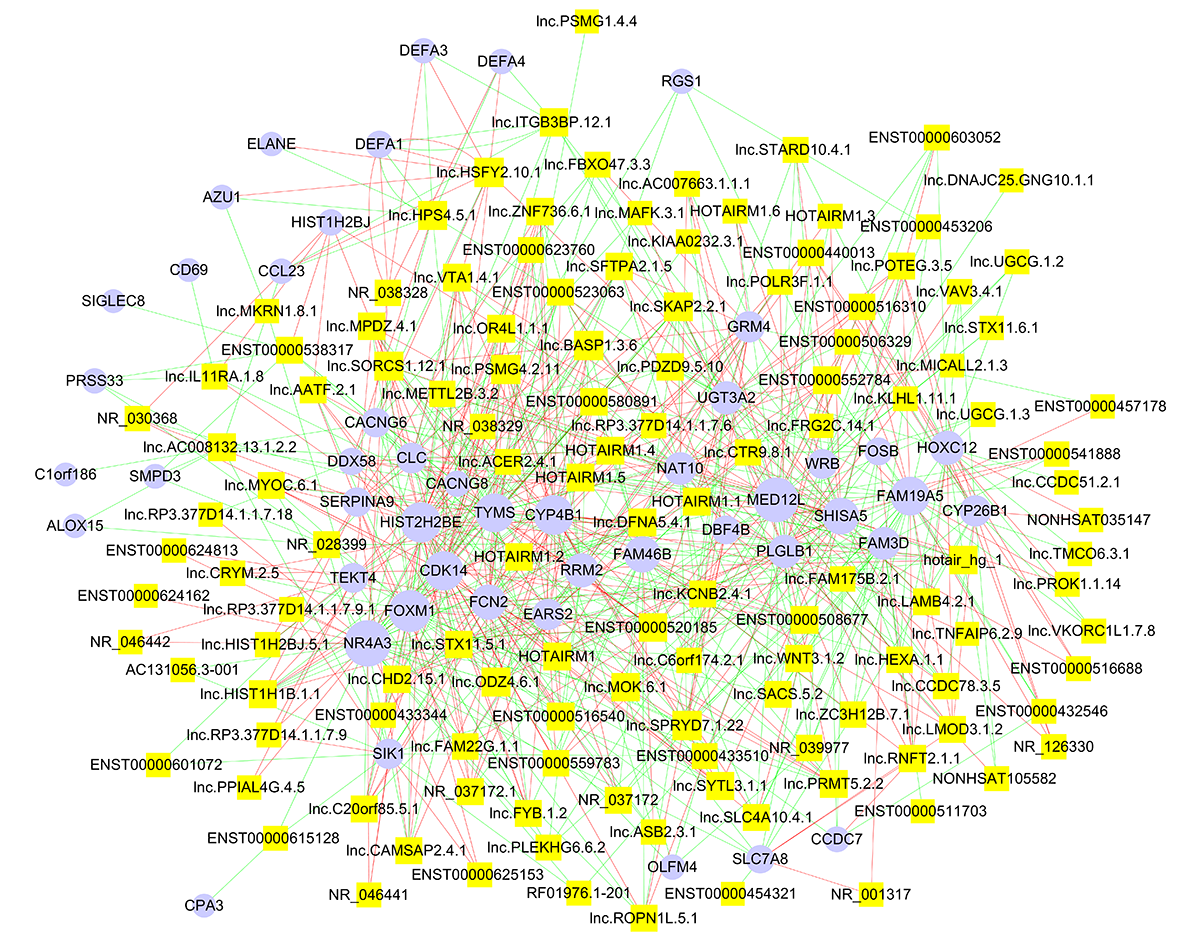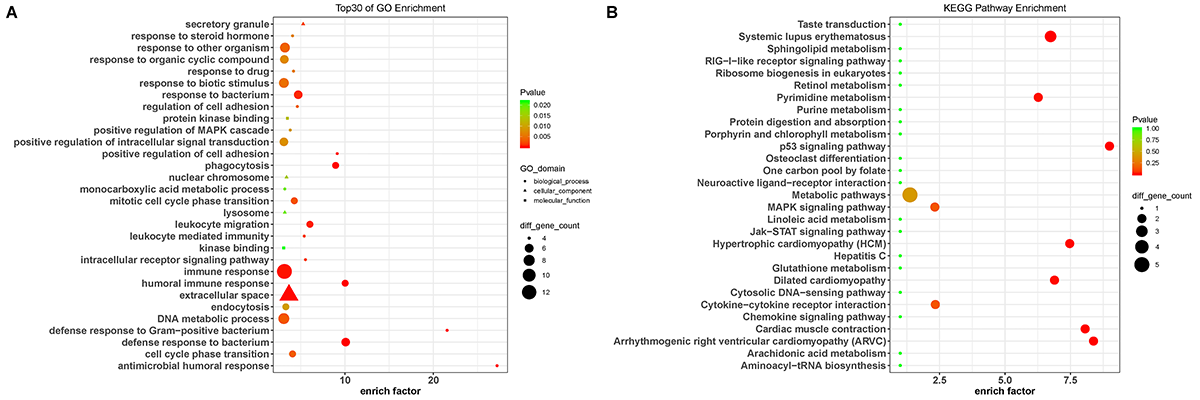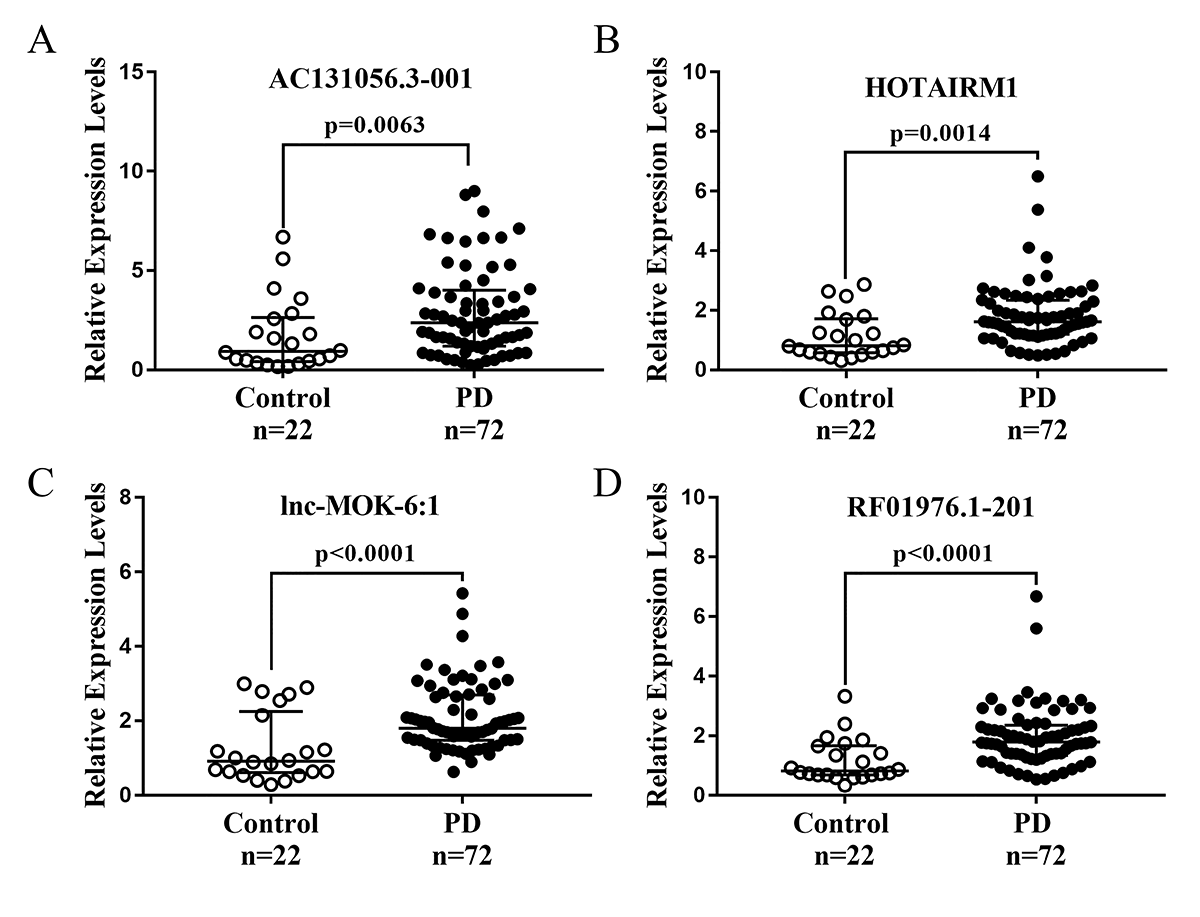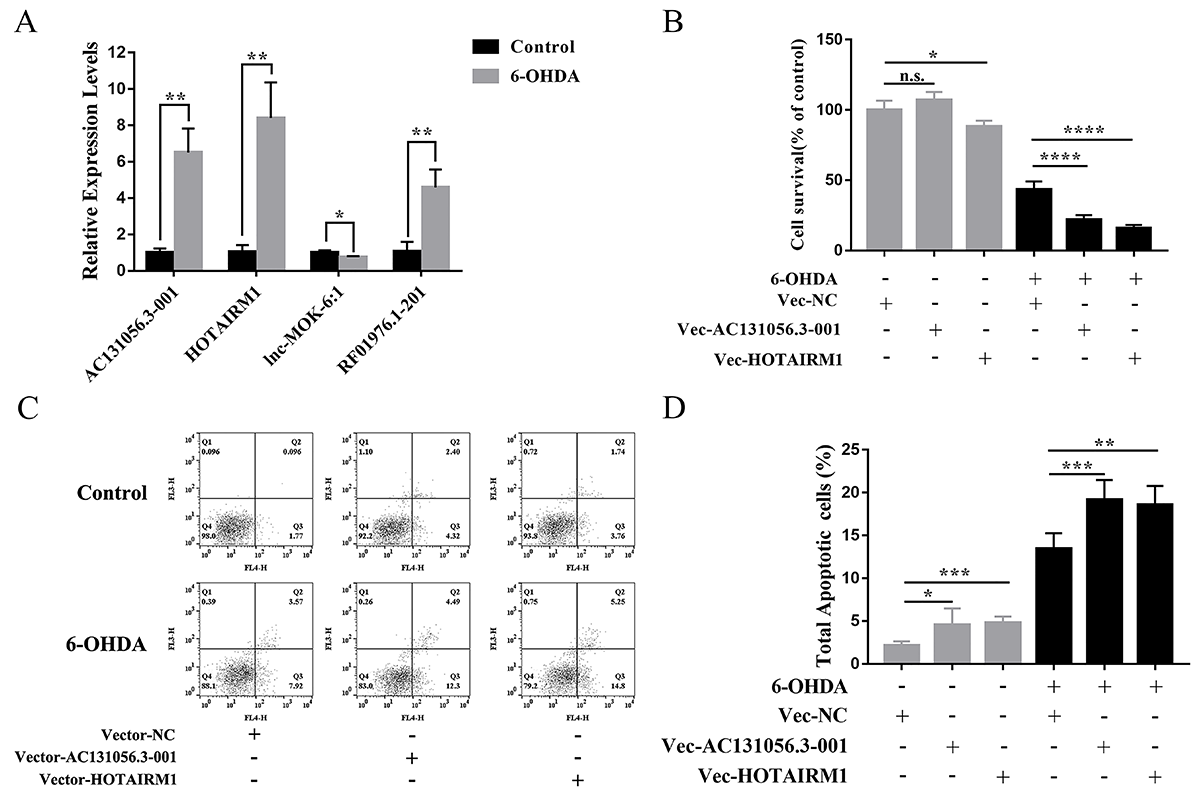Session Information
Date: Tuesday, September 24, 2019
Session Title: Parkinsonisms and Parkinson-Plus
Session Time: 1:45pm-3:15pm
Location: Agora 3 West, Level 3
Objective: The study aims to explore the expression profiles of lncRNA of PD patients and its roles to the pathogenesis of PD.
Background: The molecular mechanism underlying Parkinson’s disease (PD) remains elusive. It has been reported that lncRNA plays essential roles in the pathogenesis of neurodegenerative disease, including Alzheimer disease and Huntington’s disease [1,2]. However, lncRNA studies are still in their infancy in PD.
Method: The expression of lncRNA and mRNA in circulating leukocytes of 5 PD patients and 5 healthy control subjects were profiled by microarray. Six differentially expressed (DE) lncRNA and mRNA were verified by quantitative PCR. GO/KEGG analysis and lncRNA-mRNA network analysis of DE lncRNA and mRNA were performed. We further determined the expression of four DE lncRNA by quantitative PCR in 72 PD patients and 22 healthy controls. SH-SY5Y cells were treated with 6-OHDA as PD cell model. The expression of AC131056.3-001 or HOTAIRM1 was overexpressed by lentiviral vector in vitro. Cell viability and apoptosis with different treatments were examined by MTS and flow cytometry respectively.
Results: We identified 122 differentially expressed (DE) lncRNA and 48 DE mRNAs between PD patients and healthy controls (figure 1). There were 714 significant correlations among the DE lncRNA and mRNAs(figure 2). Gene function and pathway analysis of the 48 DE mRNAs revealed biological pathways that might be relevant to the pathogenesis of PD, including immune response, inflammatory response and MAPK pathway(figure 3). In a cohort of 72 PD patients and 22 healthy controls, the upregulation of four lncRNA including AC131056.3-001, HOTAIRM1, lnc-MOK-6:1 and RF01976.1-201 in circulating leukocytes of PD were further confirmed (figure 4). Moreover, the expression of AC131056.3-001, HOTAIRM1, RF01976.1-201 were also upregulated in SH-SY5Y cells after treatment with 6-OHDA (figure 4A). Importantly, overexpression of AC131056.3-001 or HOTAIRM1 reduced the cell viability and promoted the apoptosis of SH-SY5Y cells (figure 5C/D/E).
Conclusion: We identified distinct expression profiles of lncRNA and mRNA in circulating leukocytes between PD patients and healthy controls. Dysregulated lncRNA such as HOTAIRM1 may contribute to PD pathogenesis by promoting the apoptosis of dopaminergic neuron.
References: 1. Faghihi MA, Modarresi F, Khalil AM, et al. Expression of a noncoding RNA is elevated in Alzheimer’s disease and drives rapid feed-forward regulation of beta-secretase. Nature medicine 2008; 14(7): 723-30. 2. Sunwoo JS, Lee ST, Im W, et al. Altered Expression of the Long Noncoding RNA NEAT1 in Huntington’s Disease. Molecular neurobiology 2016.
To cite this abstract in AMA style:
Y. Fan, Z. Xue. Dysregulated long non-coding RNA in Parkinson’s disease contributes to the apoptosis of dopaminergic neuron [abstract]. Mov Disord. 2019; 34 (suppl 2). https://www.mdsabstracts.org/abstract/dysregulated-long-non-coding-rna-in-parkinsons-disease-contributes-to-the-apoptosis-of-dopaminergic-neuron/. Accessed December 29, 2025.« Back to 2019 International Congress
MDS Abstracts - https://www.mdsabstracts.org/abstract/dysregulated-long-non-coding-rna-in-parkinsons-disease-contributes-to-the-apoptosis-of-dopaminergic-neuron/

